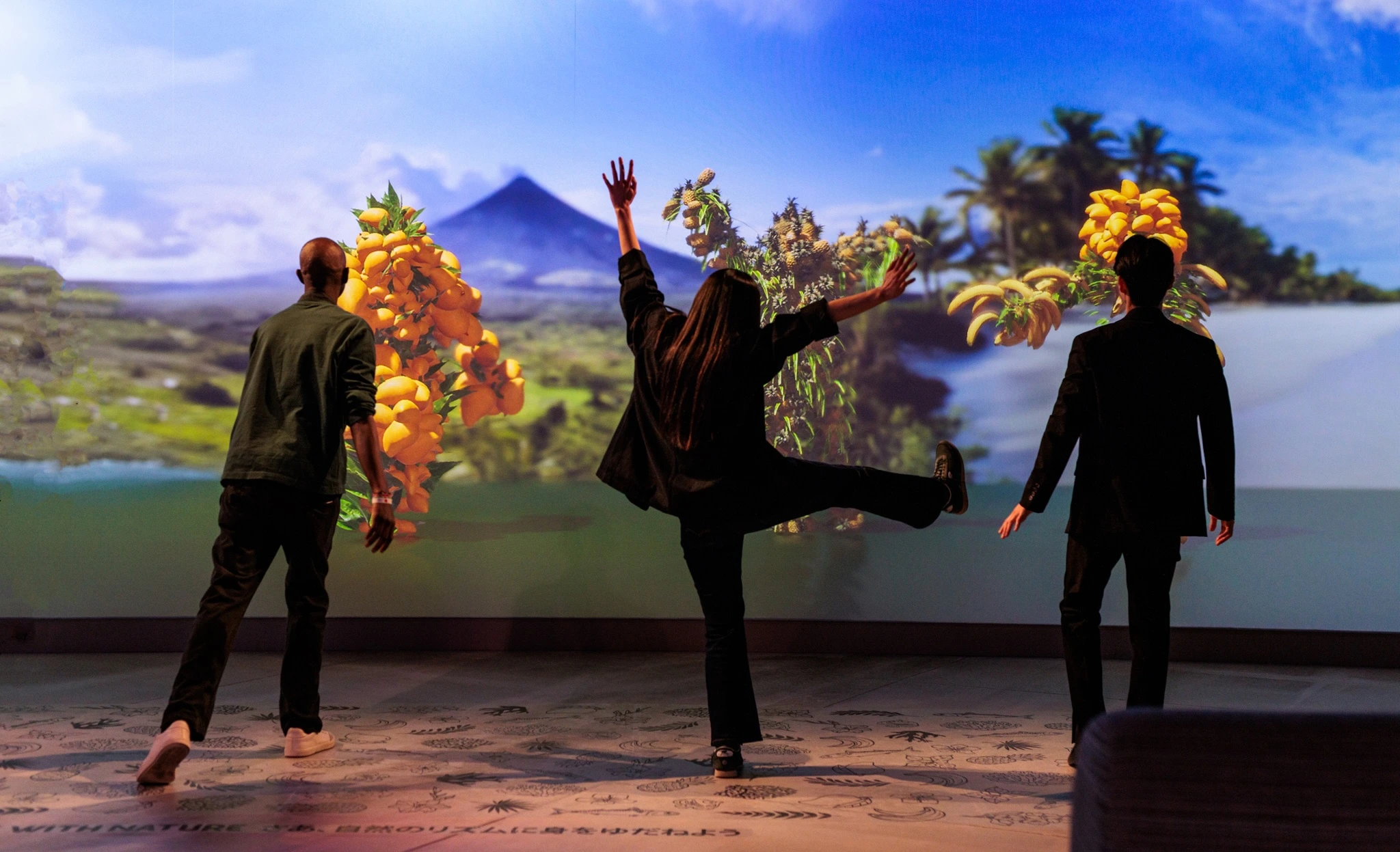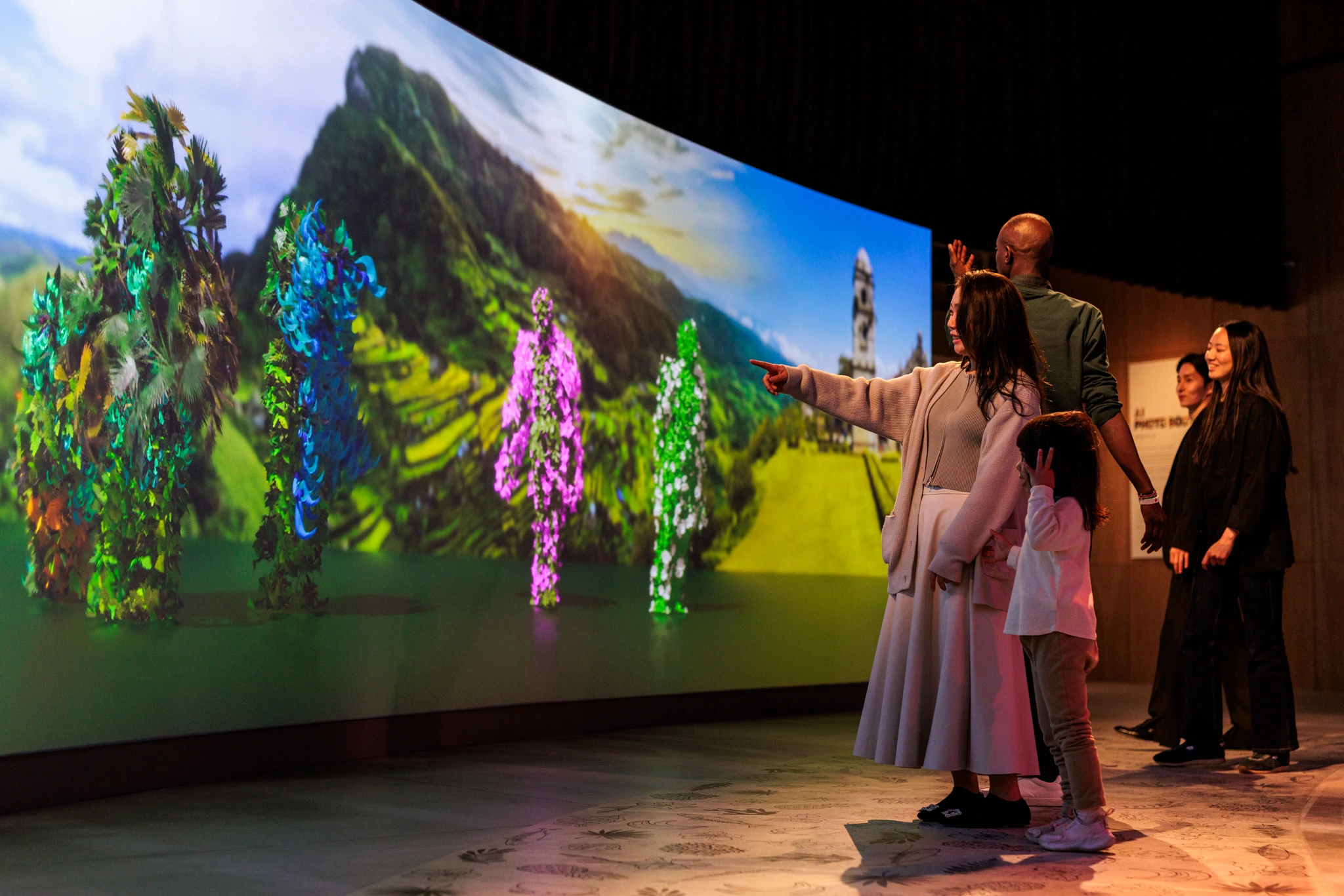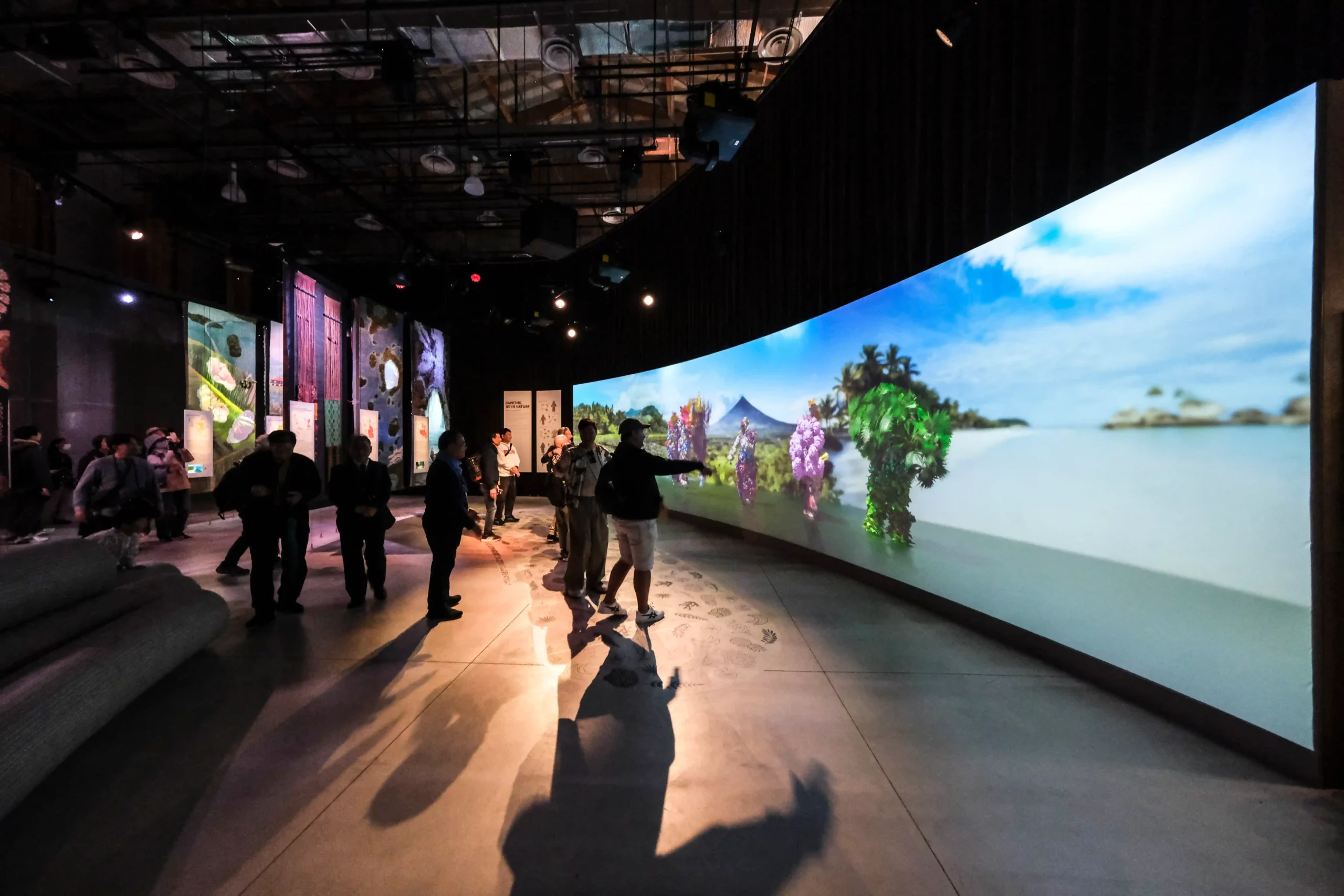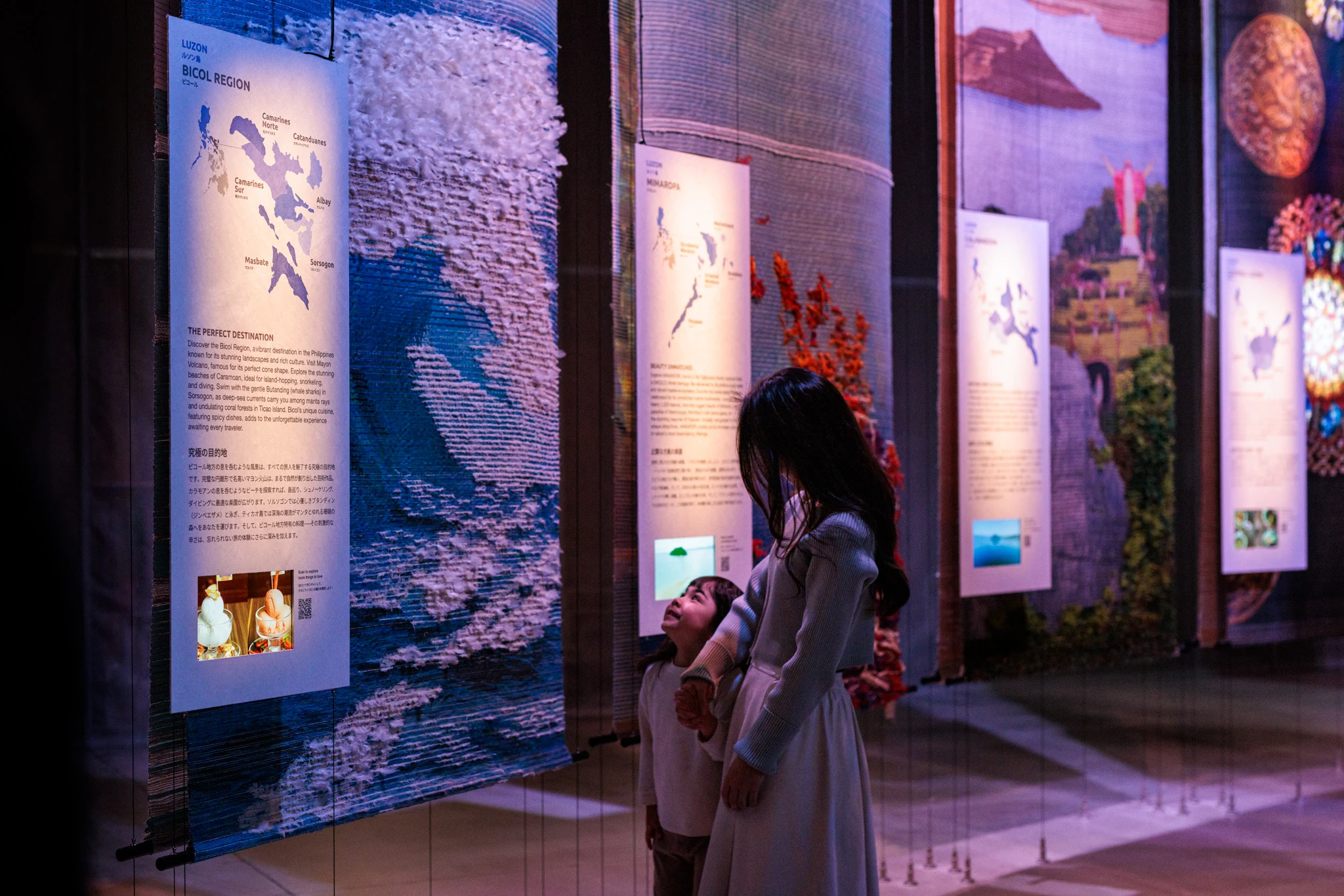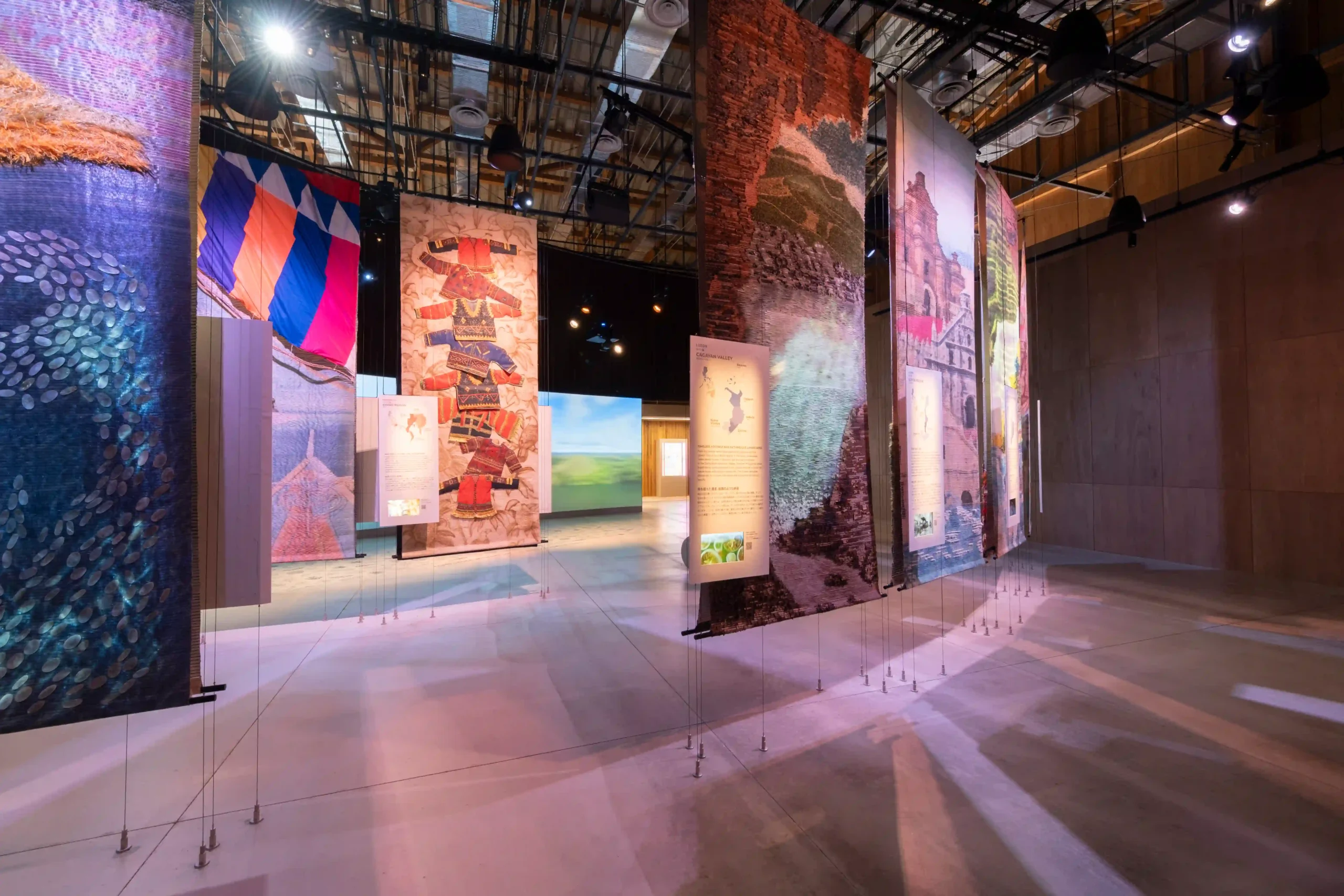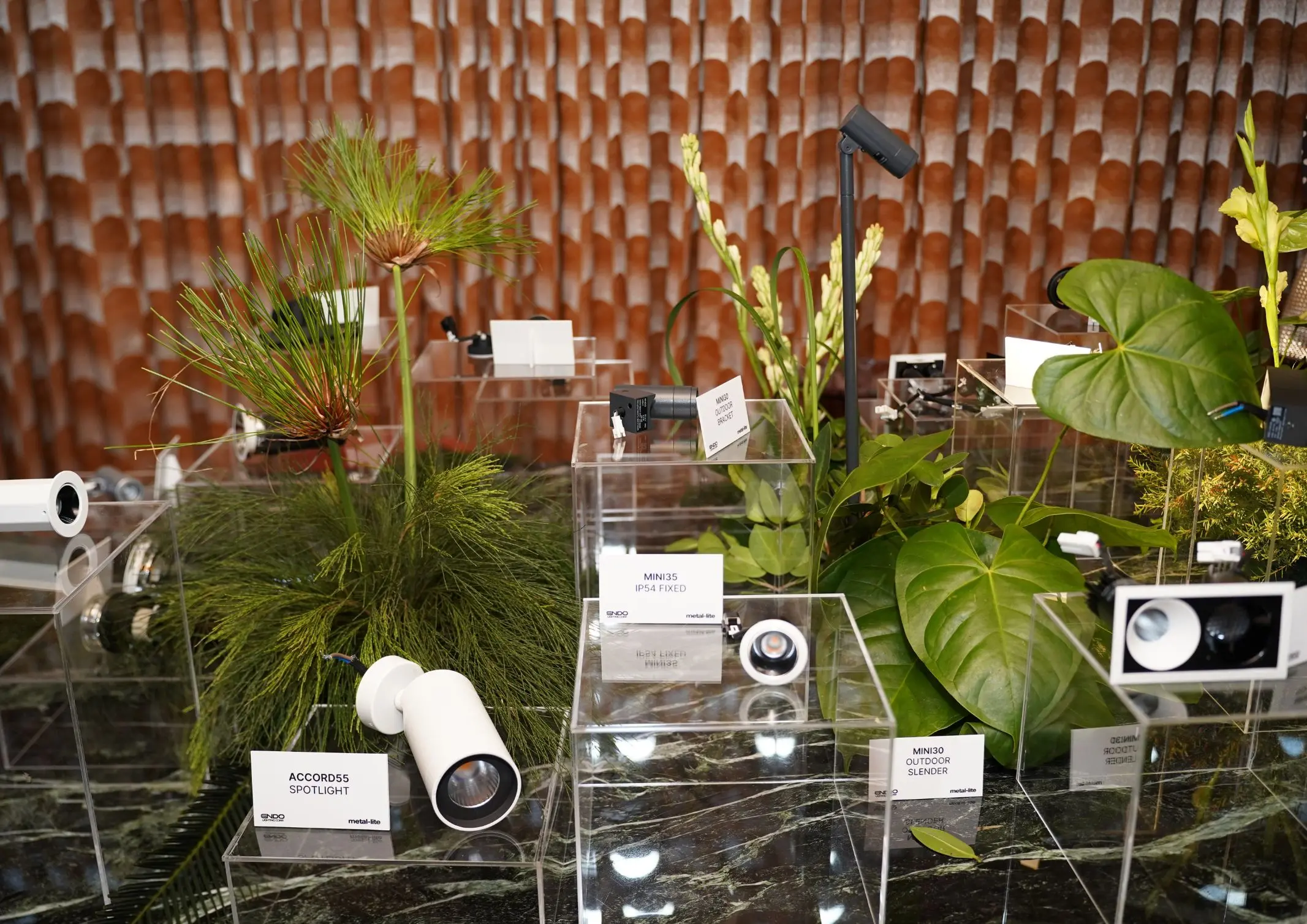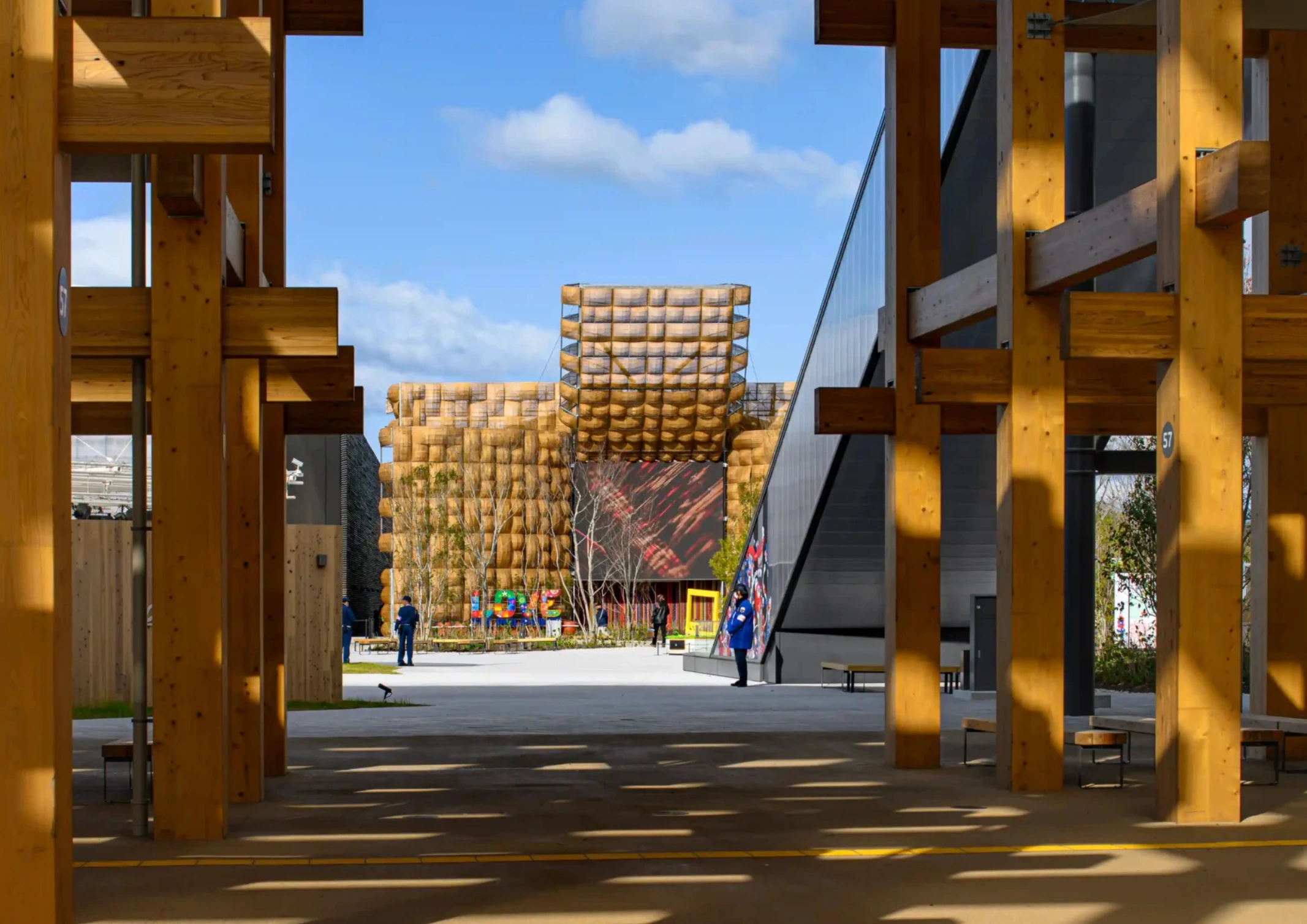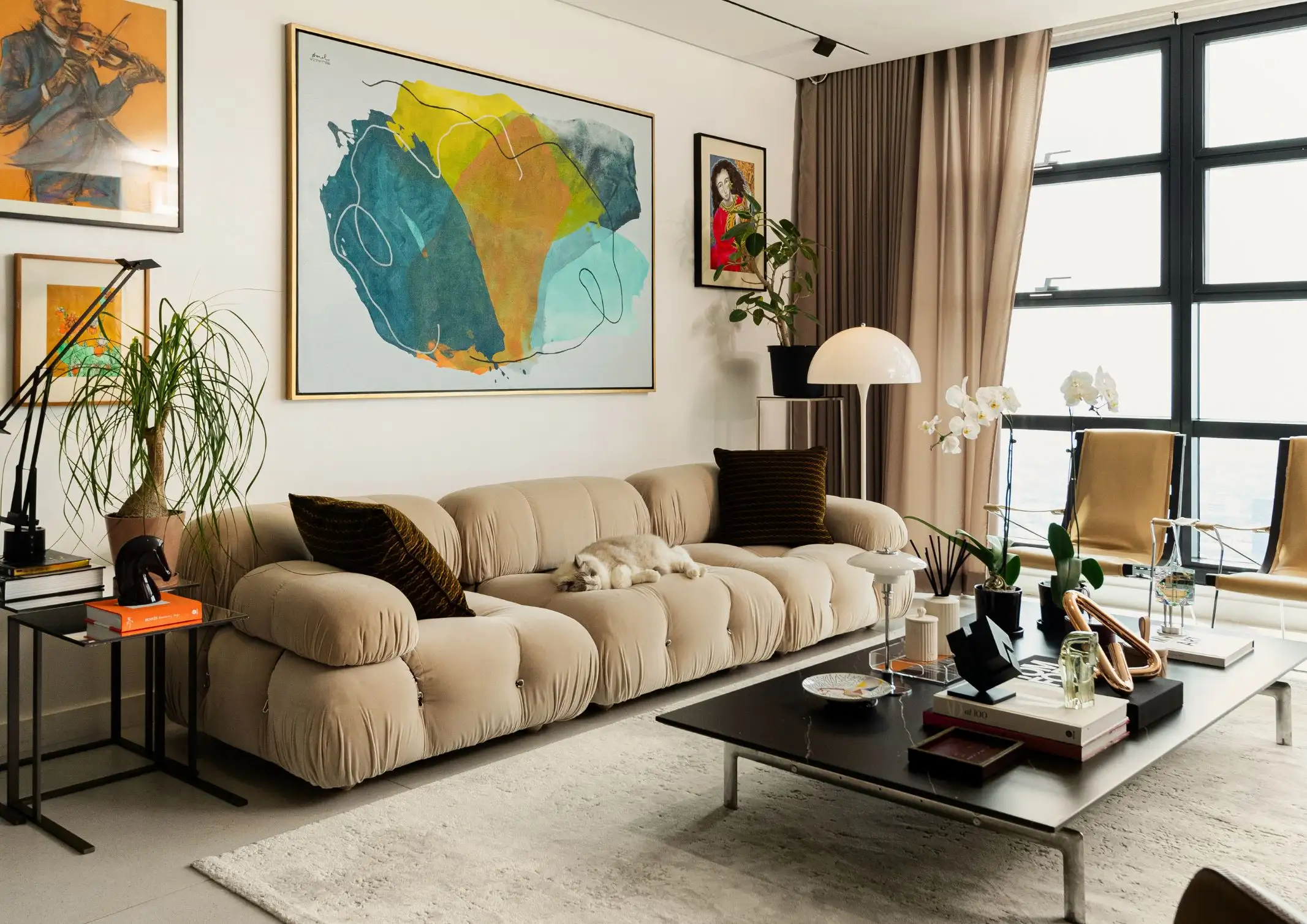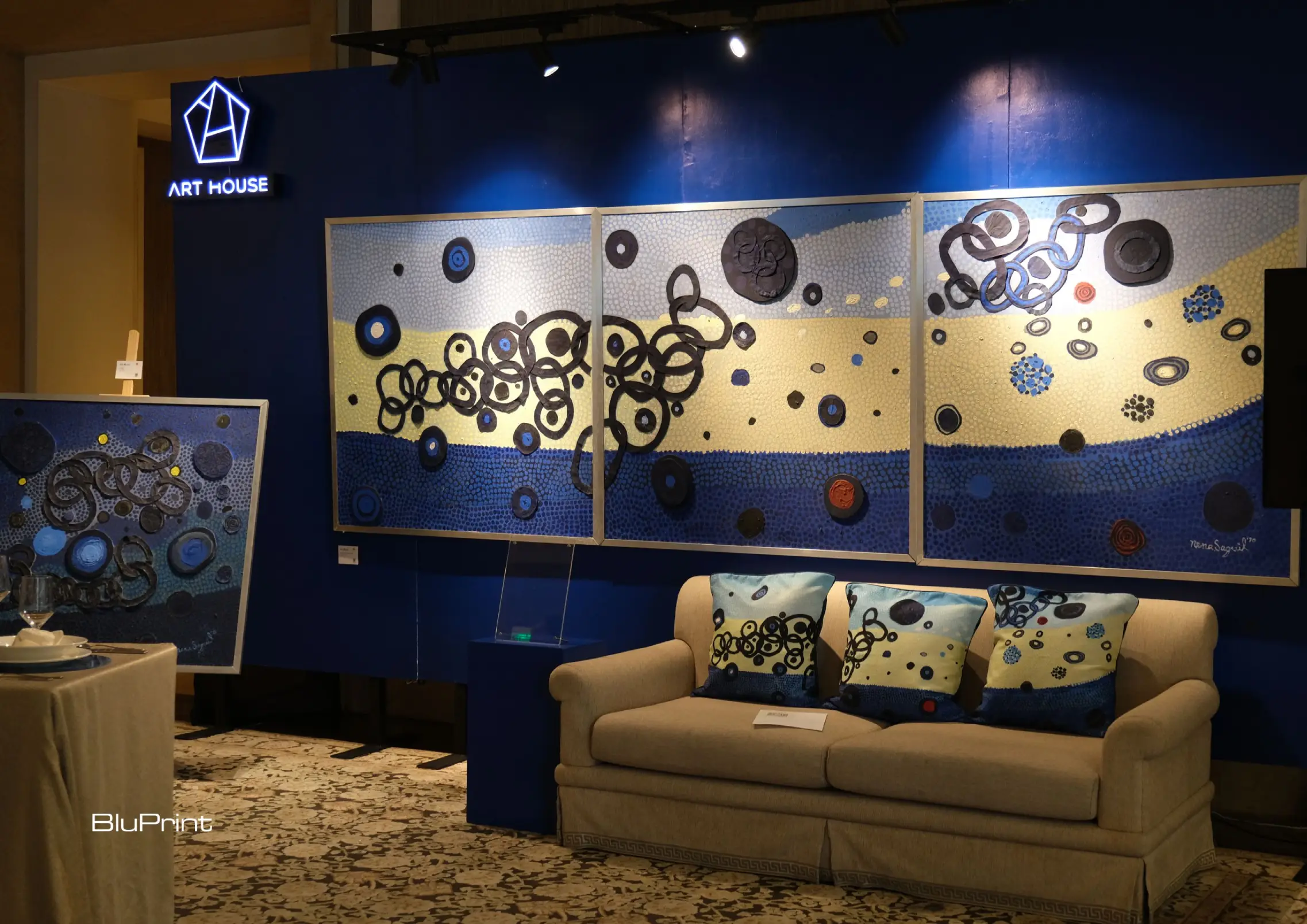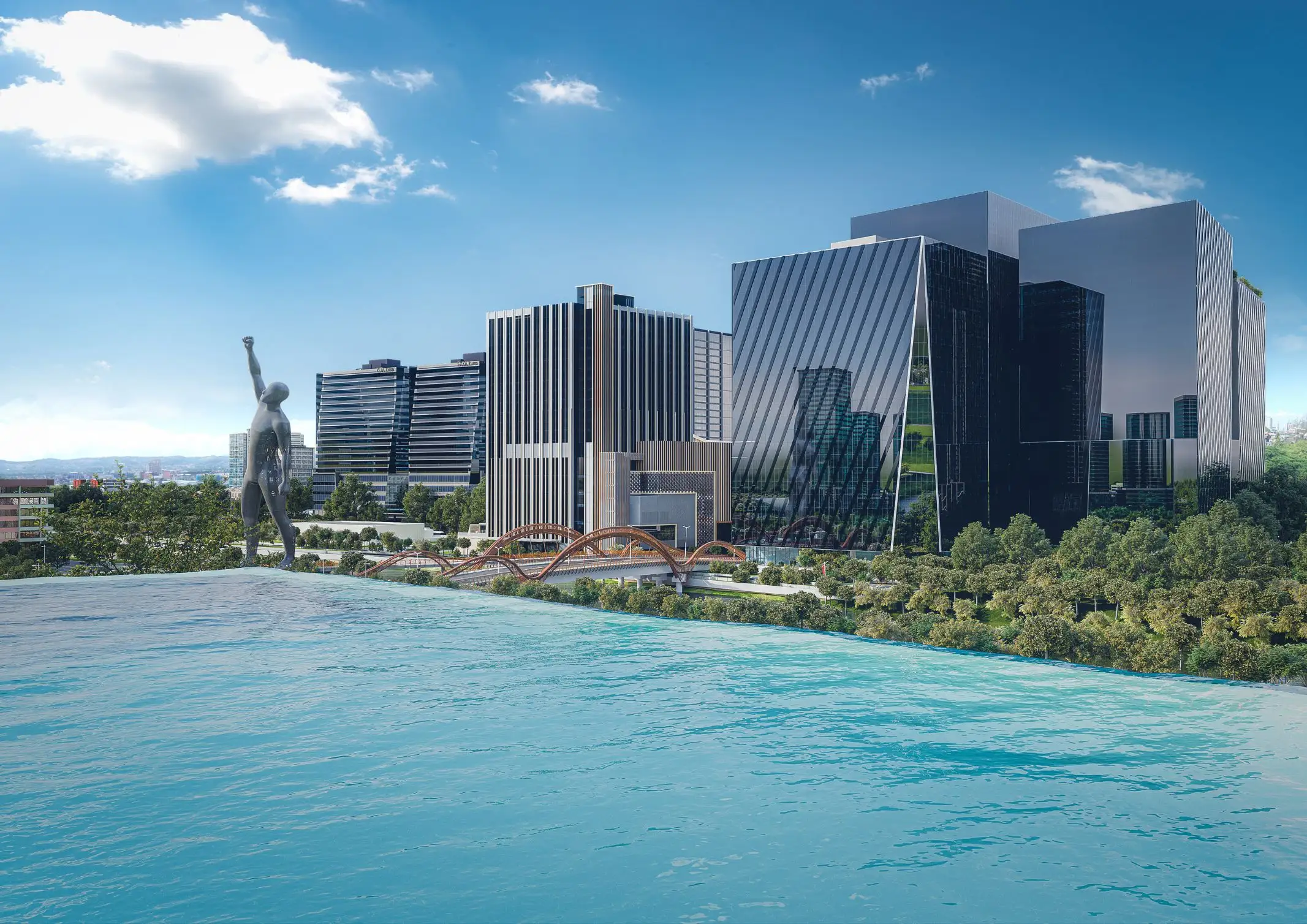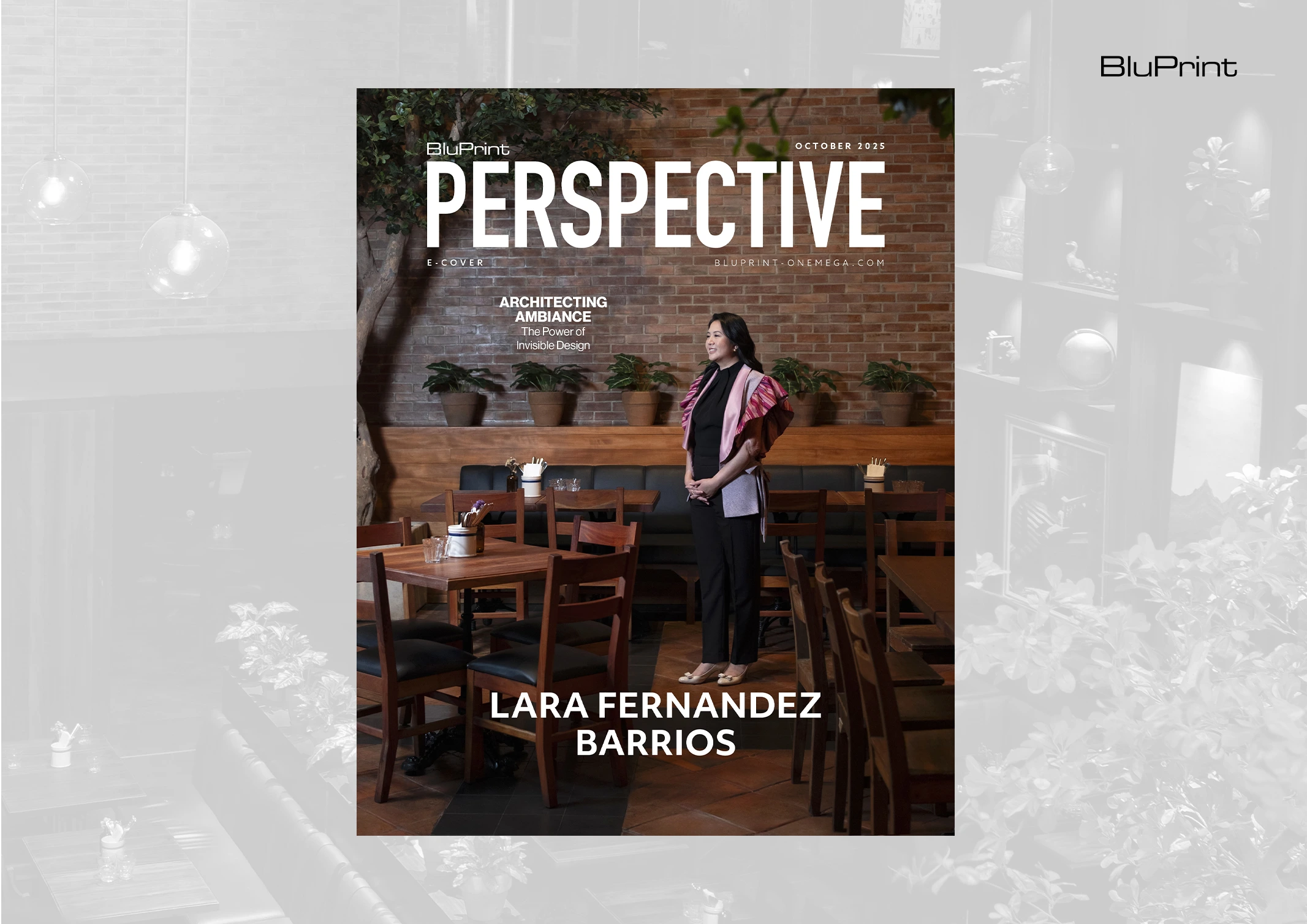Light is no longer a static utility; it is a dynamic, primary architectural material. More than just revealing form and texture, it has the profound ability to influence mood, sharpen focus, and support our well-being. This was the powerful thesis demonstrated at SYNCA, an immersive dinner experience presented by ENDO Lighting and Metal-lite, in partnership […]
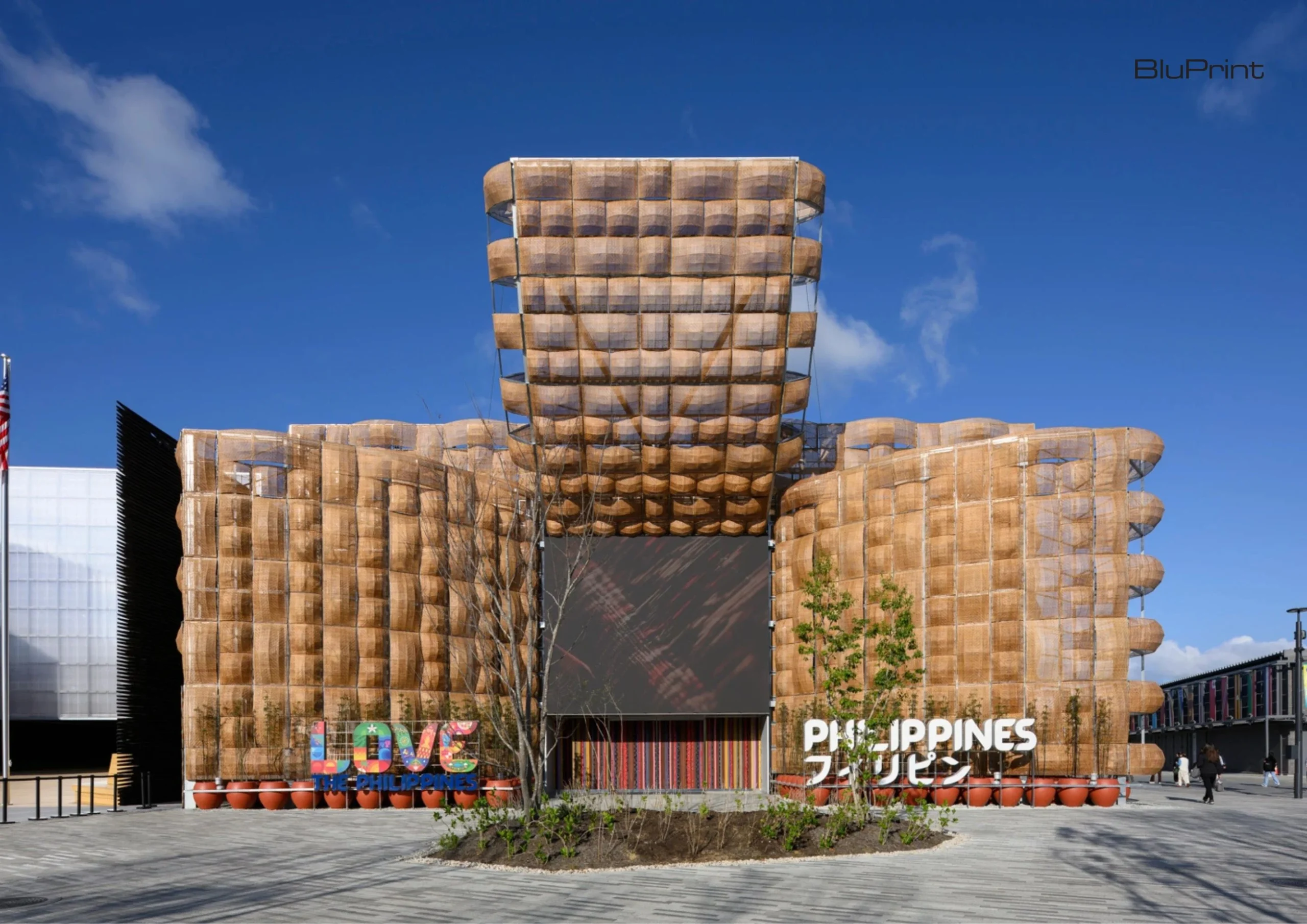
Osaka World Expo Philippine Pavilion: What the First 100,000 Visitors Know That You Don’t
May 3 marked a milestone: the Philippine Pavilion welcomed its 100,000th visitor. That number’s not just a crowd—it’s a chorus of color, connection, care, and kilig that reveal how a space becomes an experience.
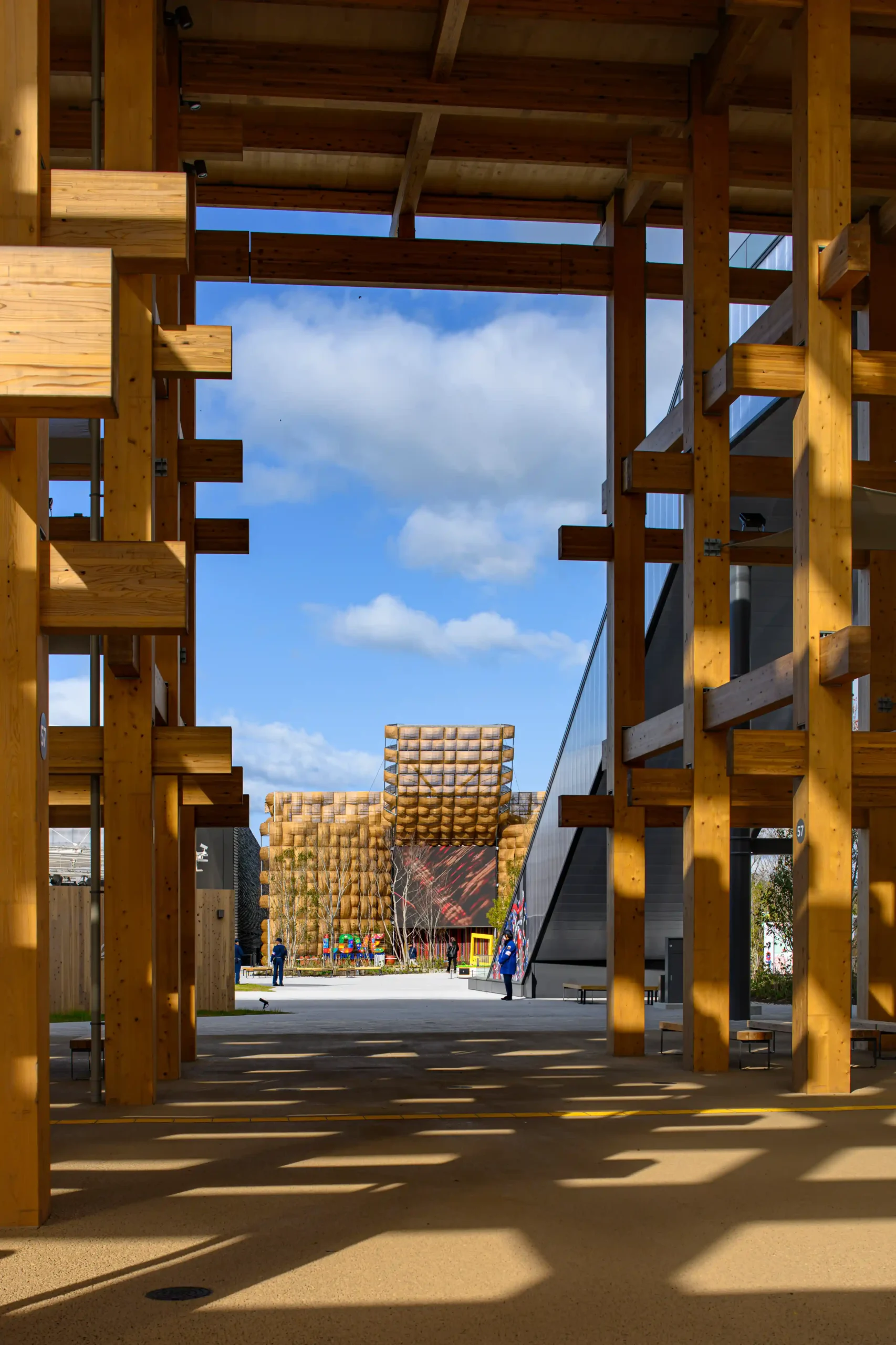
You won’t find TV crews outside anymore. The dancers don’t flinch when tourists trail them with phones. And the duyan benches—those oversized rattan loops made for lounging—are being thoroughly broken in: toddlers tumbling, titas tucking in tired toes, and teens filming TikToks with half their backsides teetering off the edges.
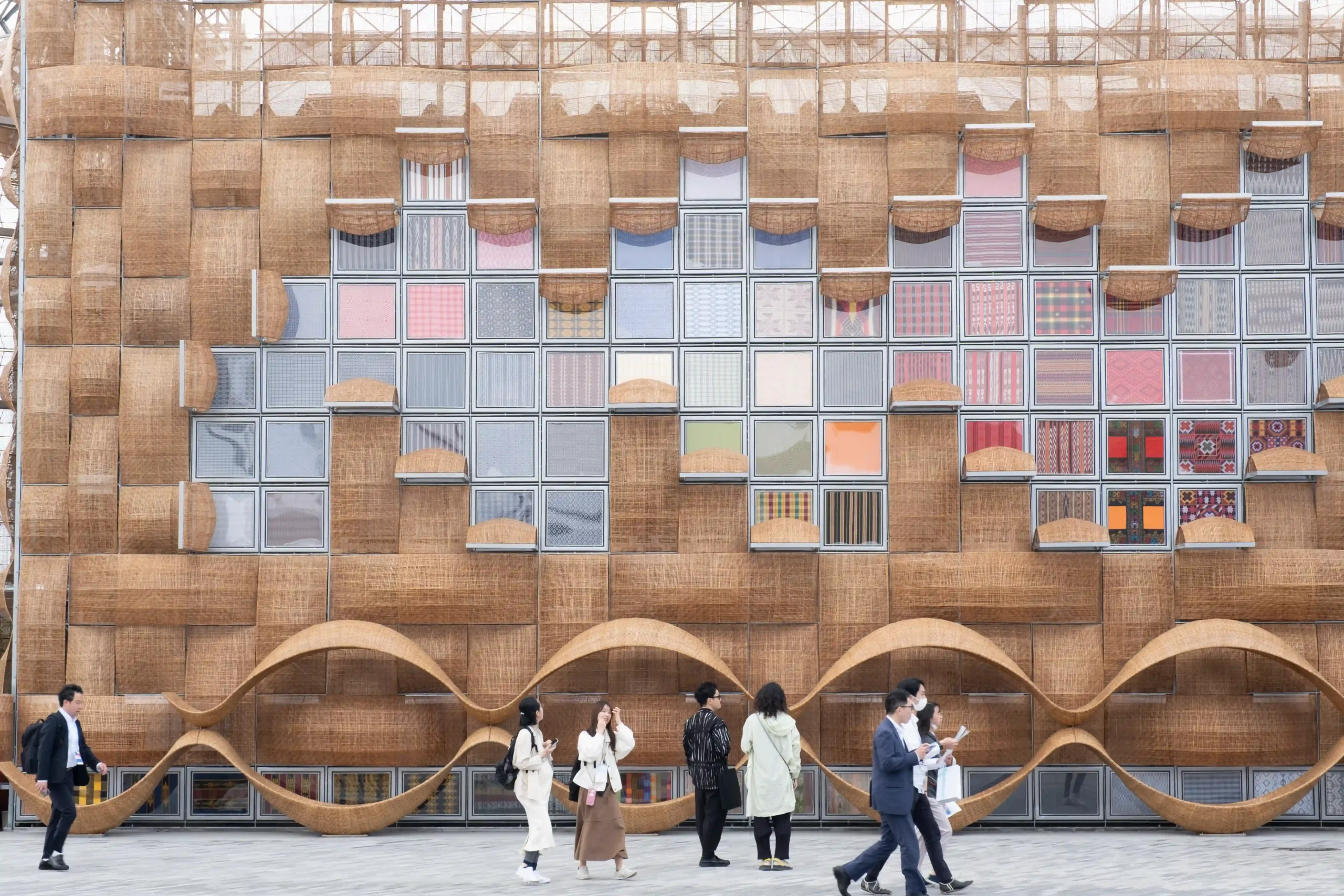
The Philippine Pavilion at Expo 2025 is no longer a debutante. It’s a practiced performer: steady, alert, and generous with every curtain call.
One month in, over 150,000 people have walked through its woven skin. The installations are still the same—the AI wall that turns your silhouette into bouncing blooms, boogying bananas, or swaying schools of fish; the woven facade of 212 panels from 121 communities. But the energy has shifted. Not for first-time visitors, but for those who perform, host, and hold the Pavilion daily. The nerves of opening week have given way to rhythm, instinct, and a kind of quiet stamina.
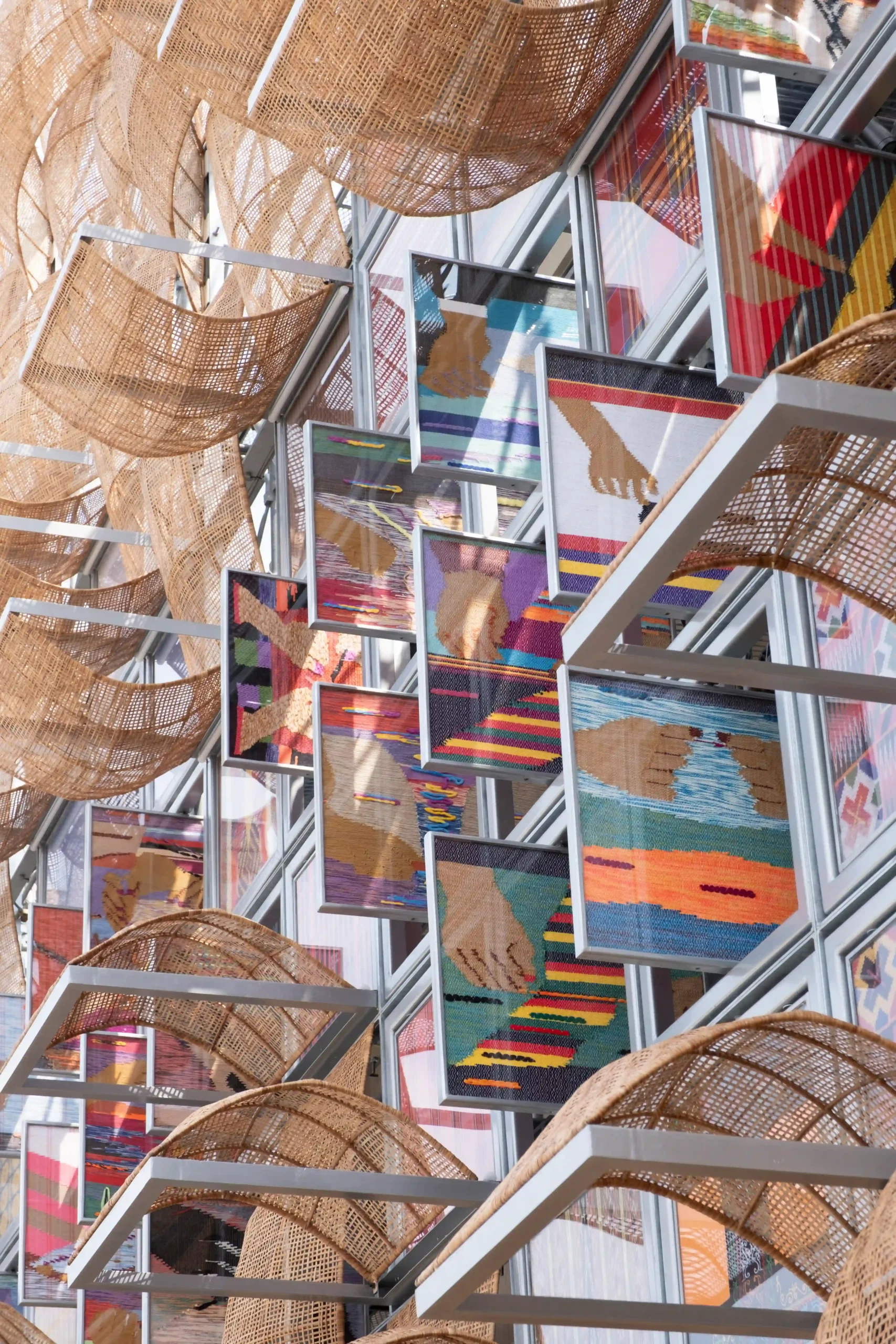
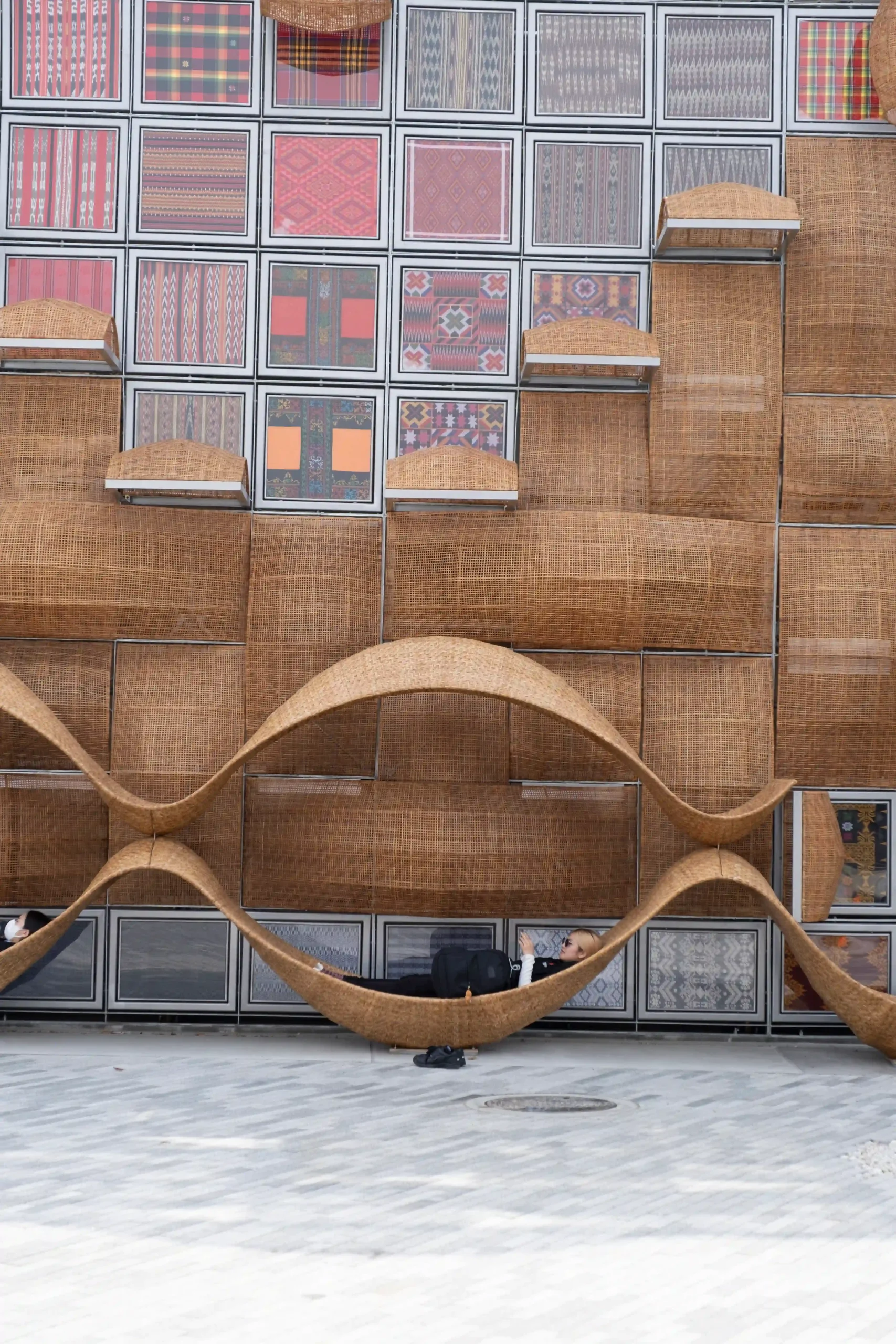
Left: 212 woven panels from 121 communities greet guests at the Philippine Pavilion. Right: Cradled in a rattan duyan, a visitor rests in the Pavilion’s woven embrace.
“We thought we’d breeze through in ten minutes,” said a Filipino-Japanese couple from Chuo-ku, Osaka. “But we ended up staying for almost forty-five. The dancers, the music—and that AI wall where you turn into a bird or bananas or something? That caught us. And siempre, we lined up for our selfies!”
Flashback: April 9
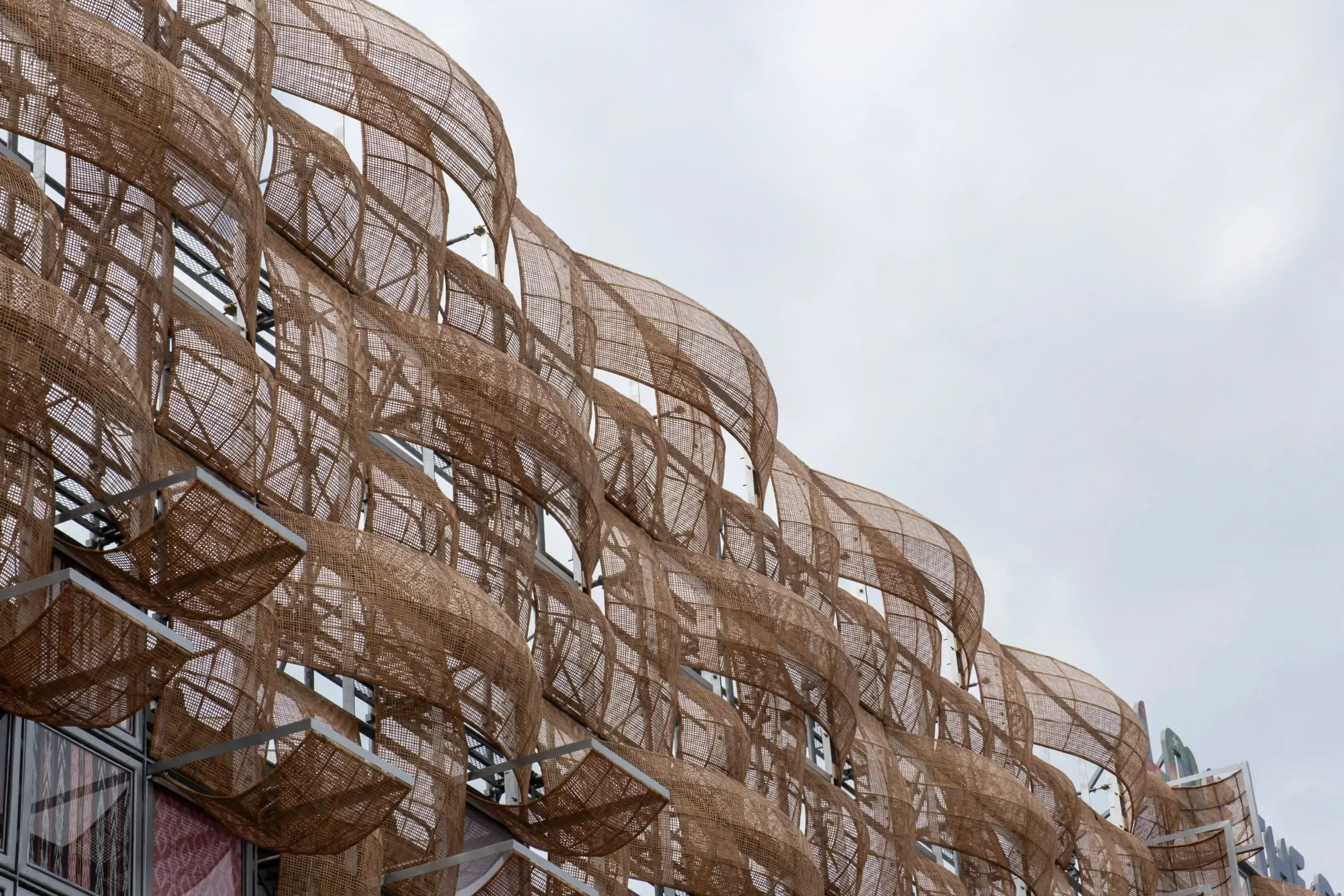
Four days before opening, I met Marga Nograles, COO of the Tourism Promotions Board (TPB). At a press briefing with BluPrint and other members of the press, she was polished and precise, dressed in formal Filipiniana. Then she changed—literally and figuratively—into silk pants and sneakers and walked us to the Pavilion.
Dancing with Nature, the Pavilion’s interactive AI wall, turns visitors into bouncing bananas, flouncing florals, and kinetic memories.
There, she stepped onto the interactive dance floor and started dancing. The AI caught her silhouette, transformed her into a bouquet of native blooms, and flung her across the projection wall like a carnival spirit. She laughed and pulled the rest of us in. Even the reserved Japanese reporters danced—shyly, at first, then more vigorously as Marga and other Pinoys shimmied without hesitation.
Clearly, an interactive area was always going to land. Tellart, the pavilion’s experience designers, understood the culture they were designing for. If there’s one thing Filipinos don’t need prompting to do, it’s dance. The only surprise to me is we hadn’t set up a karaoke booth—a nod not just to Filipino exuberance but to that perfect Filipino-Japanese fusion of invention and reinvention.
Printed scrims weave together landscapes, heritage, and handcraft—elevating Philippine textiles into immersive storytelling.
“That moment, I remember, was joyful, unexpected, and so Filipino in spirit,” says Marga. “Seeing our Japanese media friends slowly tap their feet, smile, and eventually get up to join the dance was incredibly heartwarming. It reminded me that no matter how different our cultures may seem on the surface, music, movement, and shared laughter can bridge so much.”
“It showed me we weren’t just showcasing Filipino culture—we were offering it in a way that reached people, personally. That’s the kind of connection we hope every guest carries home—and that it stirs something enough to bring them to our country.”
Two Weeks Later: Back in Osaka
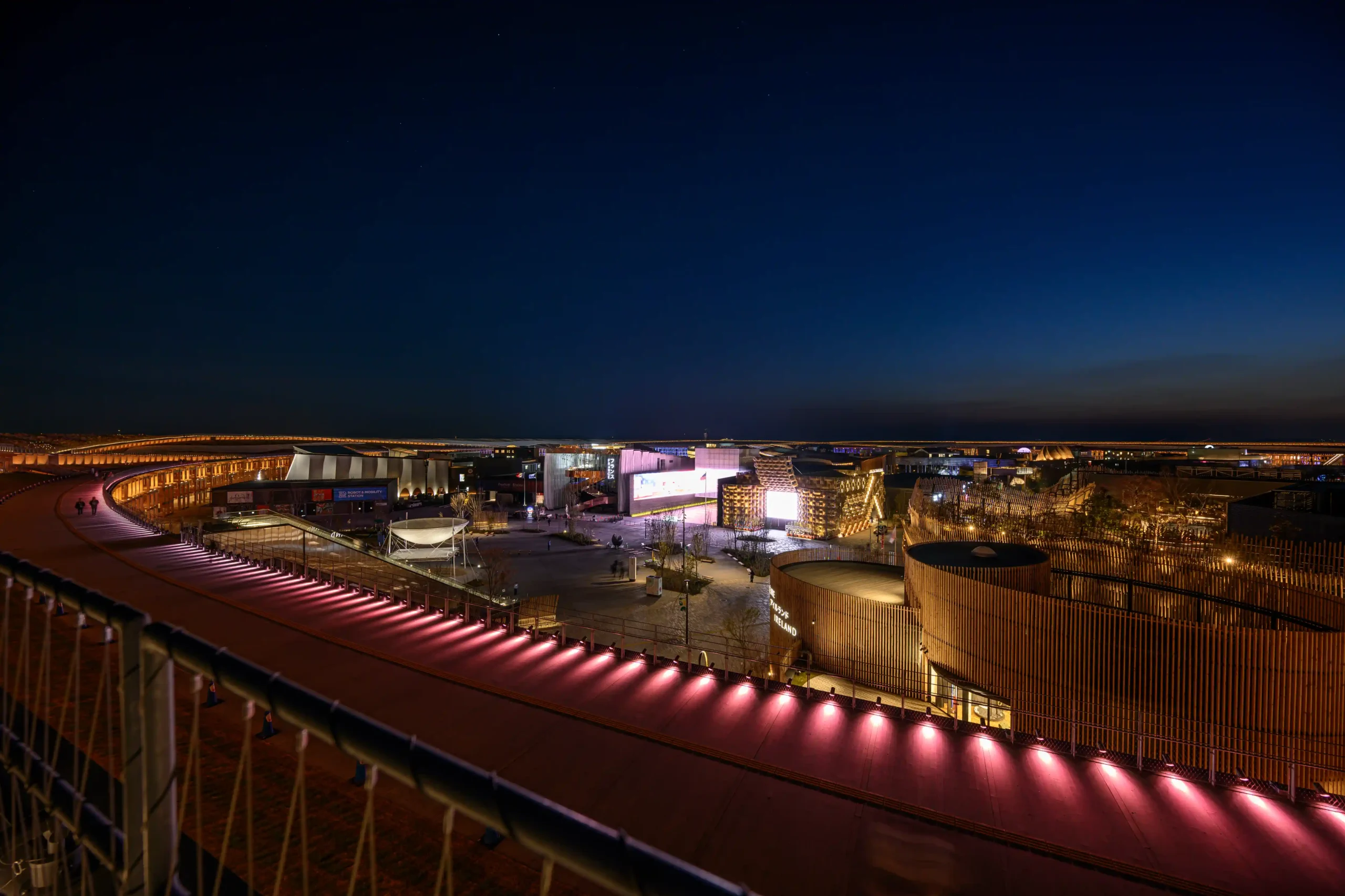
I returned to Osaka two weeks later, this time with husband and daughter in tow, to see what the other country pavilions had on offer. We stayed on after watching the spectacular water and light show, Under the Midnight Rainbow, shivering in the wind as Yumeshima’s 15-degree chill felt more like 10.
Expo at night is a different creature altogether—pavilions softened by shadow, lit from within, glowing invitations in the dark.
The Philippine Pavilion glimmered warmly, radiating a quiet force—less like scaffolding, more like structure. Its warp and weft resolved in the soft lighting, the form more cohesive than in sunlight, when its bones show through the façade.
Just before Closing
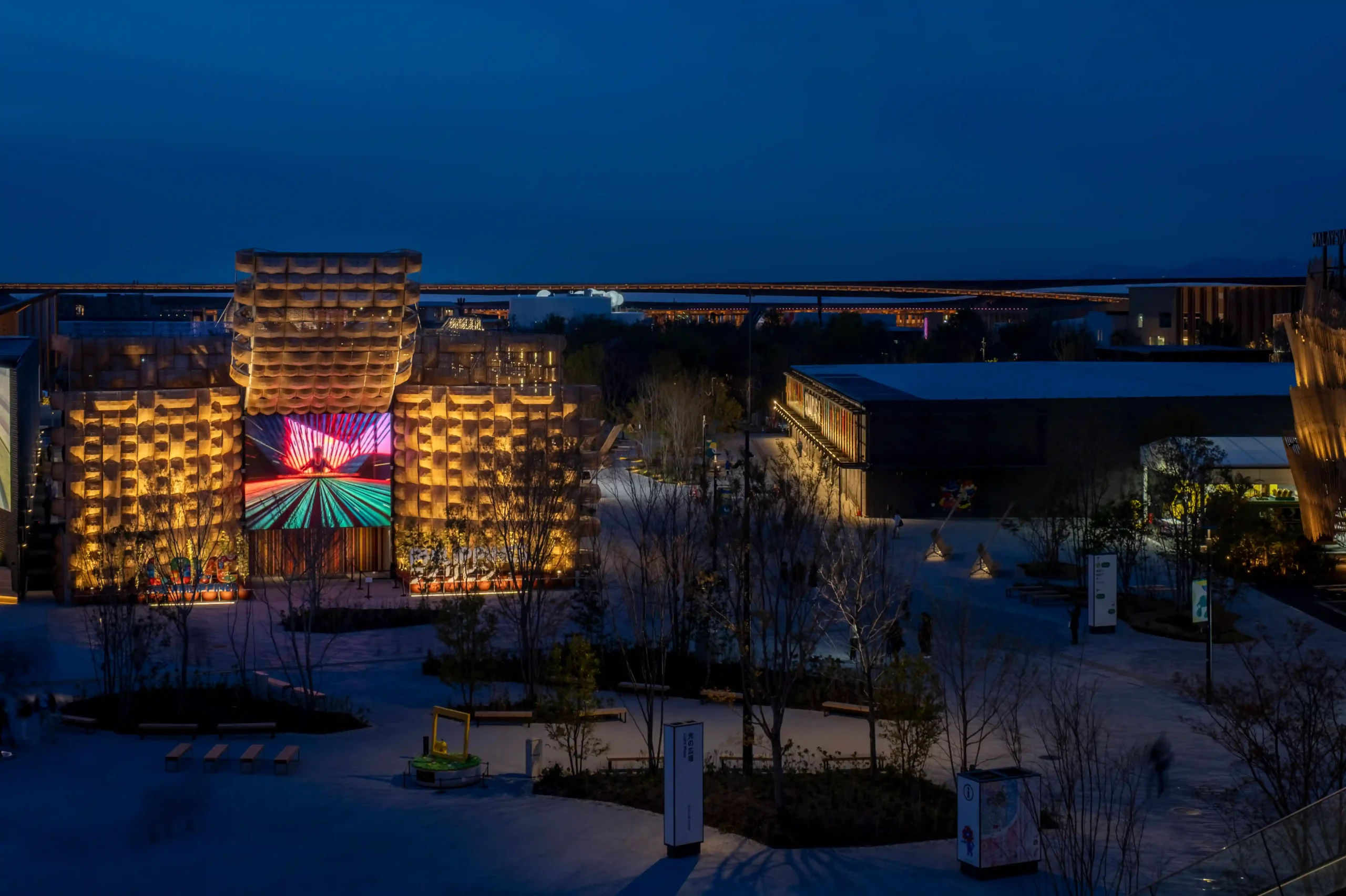
It was a few minutes shy of 9:00 p.m. There were no greeters at the entrance, so I knocked at the side door. Joker—Joseph Kerr Villar, Project Development Officer at TPB—was sweeping the Pavilion floor with a synthetic version of our walis tambo, a purasuchikku hōki, when a lady guard slid the door open.
“Hello po! Okay lang pong sumilip ng saglit?”
Not a problem, they said. It wasn’t 9:00 yet. The team was catching their breath after welcoming hundreds of school children that day. Joker said more than 6,000 visitors had come through—more than a thousand above the daily average. Still, hearing Filipino seemed to give him a jolt of energy. What was meant to be a peek turned into a full-on tour: the scrims were still cycling, the dancefloor screen glowing, and AI selfie frames beckoning.
“I actually do domestic promotions po. So ang market ko is the local tourists. But part po of my work assigned here at the pavilion are protocols for events and VIPs visiting. Above and beyond and all-around po kaming lahat, even sa janitorial services, we do na rin. Hahaha!”
He laughed so warmly, we joined in—telling him how refreshing and how welcome his spirit was. He’s been with the DOT and TPB for 14 years. But this—this choreography of constant welcome, this quiet ethnography of visitor reactions, this daily holding of space—is different.
What Keeps Them Going

Joker and I speak again. I ask how intense it gets. “You’ve got to have malasakit at TPB,” he says—that uniquely Filipino sense of care and responsibility. “If we don’t do it, who will? Sino po ang tatapos?”
The hours are long—some days, four hours of standing at a stretch. After closing time, they sweep, disinfect, and debrief. And in the morning, it all begins again. But when the guests walk in, mouths open, and faces lit up?
“Instant renewal of energy!” Joker says. “We all remind each other: For our country. Para sa bayan.”
I get a laugh emoji when I ask if anyone’s cried. “No one’s cried from exhaustion,” he says. But from joy? “All the time po. Nakaluluha ang saya na makita ang mga bisita na masaya.”
And then there’s the soft-spoken middle-aged Japanese man who’s visited the Pavilion several times—today is his seventh. Staff have seen him photograph every scrim and read every caption on display.
The story comes to Joker through a colleague, Danji Ferrolino, who once caught a moment to chat with the man. “It’s been his dream ever since to visit the Philippines, but he never had the chance,” Joker shares. I ask him why. Joker wonders too. “And now he says it feels out of reach,” Joker adds. There’s a long pause in our chat. It feels like a sigh. The team has grown quietly fond of him. They hope to befriend him.
We’re hoping to as well.
Holding Space, Every Day
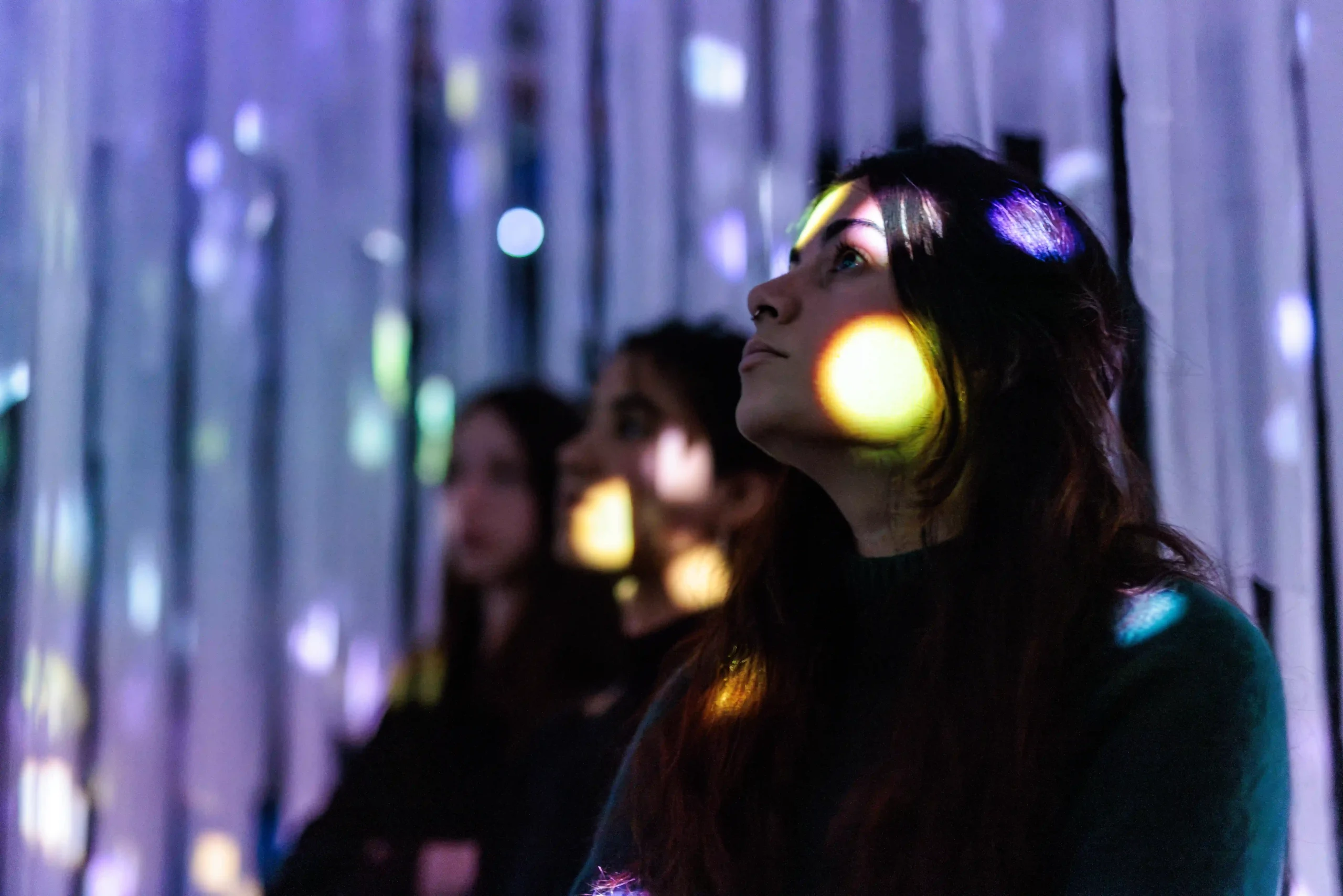
Inside, the AI installation Dancing with Nature still surprises and draws smiles. And for the staff and dancers, this surprise is something they now guide, shape, and anticipate like clockwork. Each first-time visitor makes it new again; the team just knows the beat before it drops.
The Pavilion performs daily. On repeat, but never on autopilot. The choreography hasn’t changed, but the quiet precision behind it has—staff, performers, and tech now moving in sync to make each moment feel spontaneous, even if it’s been staged a hundred times.
“At the beginning, our focus was all execution—every detail, every element, making sure the vision came to life,” Marga says. “But now, watching how people engage with the Pavilion has shifted everything. It’s no longer just about the structure—it’s about the stories unfolding inside.”
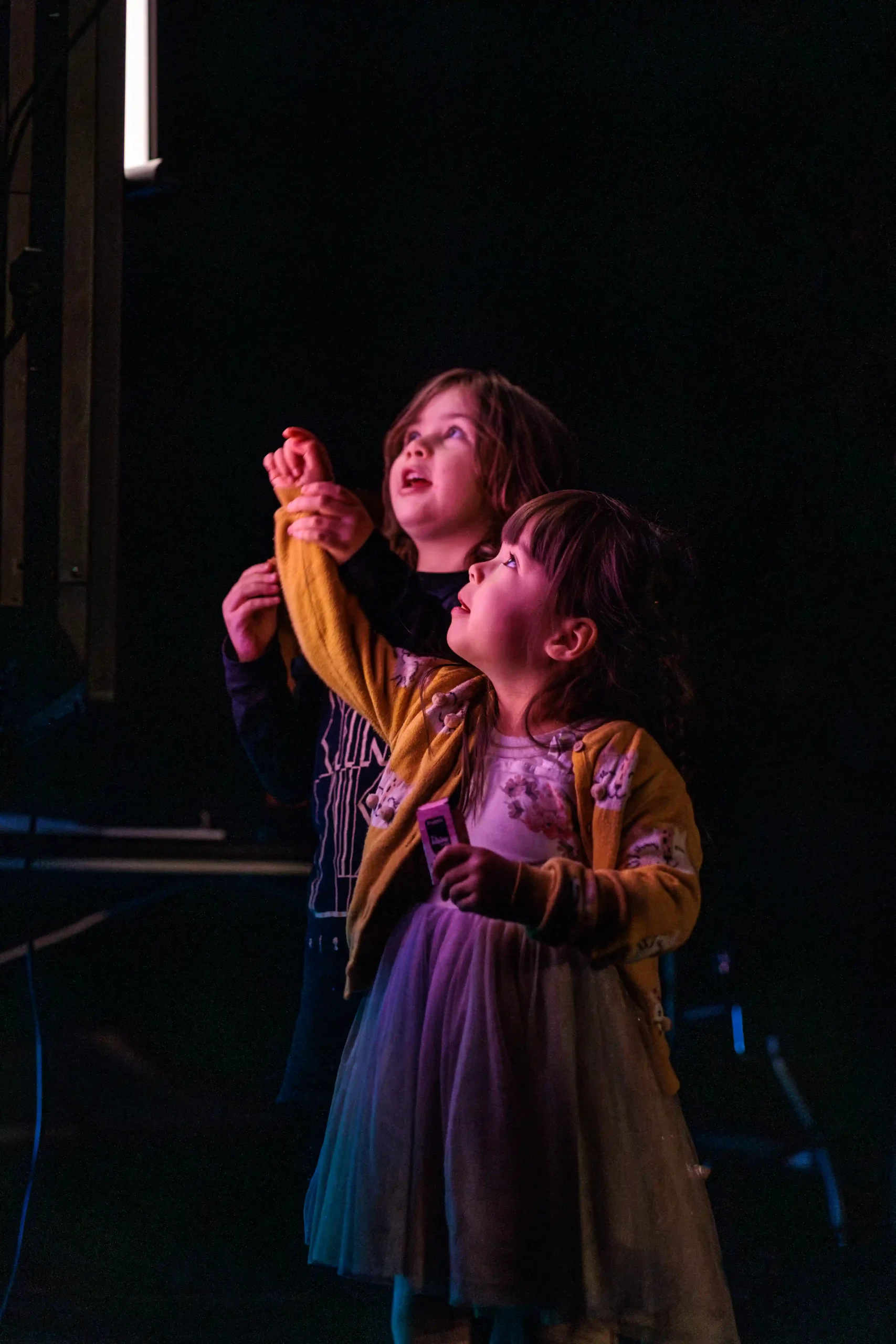

Left: Children gaze up at handwoven scrims—each a story stitched from memory and place. Right: A visitor stands still as light and shadow ripple through the Pavilion’s woven threshold.
“Guests connecting with the 18 handwoven pieces. Children dancing in front of the digital screens. Filipinos walking out feeling proud and seen. Amidst all the technology and design, nothing will ever replace genuine human connection. That’s what defines the Pavilion—and what makes the Philippine experience unforgettable.”
Other pavilions hand you a device and teach you something. The Philippine Pavilion hands you a smile and invites you to join in. The interaction is kinetic, reciprocal, face-to-face. The dancers perform and engage—and all the staff too! Pinoys are shameless that way. The AI reflects, reshapes, responds. What you leave with is something personal.
Not just spectacle—something that stays. A memory.
That’s what the first 100,000 visitors already know.
Next in the Series: “This Looks Like My Dream”
Before a single rattan strip was bent or scrim woven, there was a meeting in a remote weaving village that left the Pavilion’s design team shaken. Architect Carlo Calma and Pim van Baarsen of Tellart came to present their vision. What they didn’t expect was a quiet prophecy from an old weaver—a moment so uncanny it stopped them cold.
Photographed by Ed Simon, Masaki Komatsu, and Tellart.
Read more: Carlo Calma and His Pursuit of Architectural Happiness
